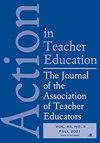Mirror of Mind: Eliciting Critical Reflections in Preservice and Novice Teachers
Q2 Social Sciences
引用次数: 1
Abstract
ABSTRACT This qualitative case study responds to calls for research on the ways critical reflection develops in preservice and novice teachers. While evaluating capacity to reflect is a dominant practice in teacher education, few studies explore empirically how different factors impact teachers’ reflection. Building from earlier research that conceptualized a typology that included four levels of reflective thinking, this study explores how different factors spur the highest form of reflection identified by the literature, critical reflection, through a multi-method approach involving several sets of data across nine cases of learning to teach. Findings from within-case analyses suggest some habits of critical reflection transfer across contexts, while others appear to be contextually dependent. Shifts in teaching contexts and elicitation practices appear to drive the quality and quantity of critical reflection suggesting that some habits of reflection can be elicited and reinforced by teacher educators regardless of context.心灵之镜:在《保存》和《新手教师》中引发批判性反思
本定性案例研究回应了对职前教师和新手教师批判性反思发展方式的研究呼吁。尽管评估反思能力是教师教育中的一种主要做法,但很少有研究从经验上探讨不同因素如何影响教师的反思。本研究建立在早期研究的基础上,该研究概念化了一种包括四个层次的反思思维的类型学,探讨了不同因素如何通过涉及九个学习教学案例的多组数据的多方法方法激发文献中确定的最高形式的反思,即批判性反思。案例内部分析的结果表明,一些批判性反思的习惯会在不同的背景下转移,而另一些则似乎依赖于背景。教学情境和启发实践的转变似乎推动了批判性反思的质量和数量,这表明教师教育者可以在不考虑情境的情况下激发和强化一些反思习惯。
本文章由计算机程序翻译,如有差异,请以英文原文为准。
求助全文
约1分钟内获得全文
求助全文

 求助内容:
求助内容: 应助结果提醒方式:
应助结果提醒方式:


